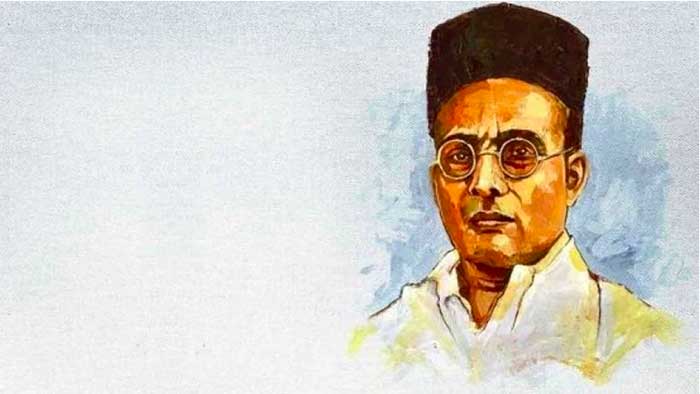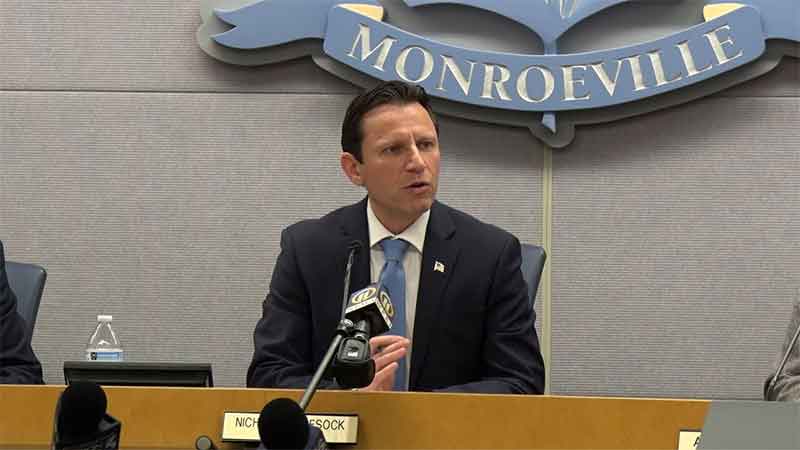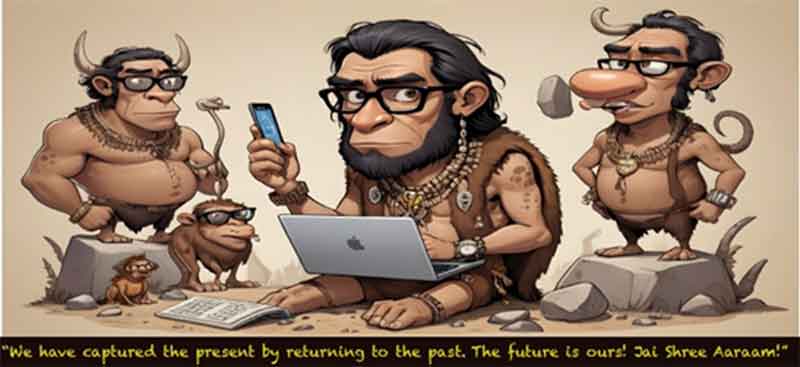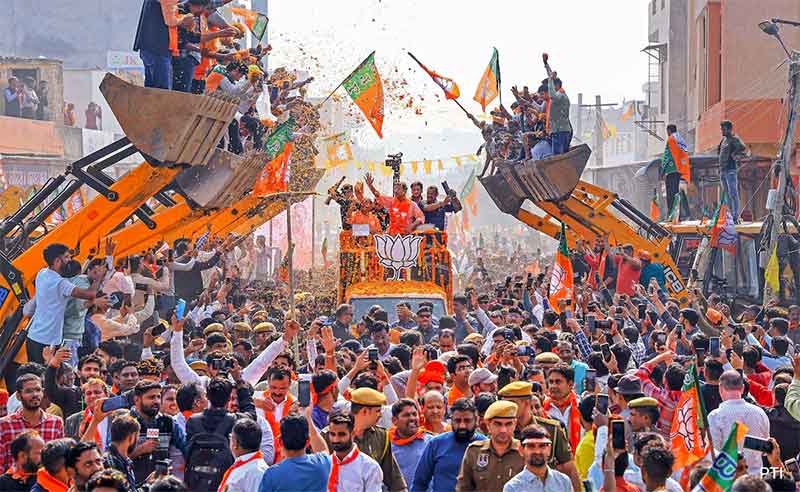
It is an elementary principle of any political conflict or even warfare in the wider sense that in order to fight your enemy you have to acquire a more or less precise knowledge of the character,intention and strategy of your enemy.At this extremely critical moment of our democracy we are up against the force of Hindutva armed to the teeth to overturn and undermine democracy both from within and outside.Both implicitly and explicitly,Savarkar remains the main source of ideas that hold together and inspire the various organizations that work for Hinduization of the State. Hedgewar,founder of RSS considered Savarkar his mentor but went on independently to found an organization with a view to turning his ideas into reality under his primary command.He realized correctly that Savarkar simply lacked the knack to build a POPULAR organization that would give shape to his ideas.History is witness to the fact that in spite of differences from time to time each of the two was fated to collaborate with the other till today.
The time both were born in was a fateful turning point in the history of India.The liberal constitutional reformist group of Congress leaders had failed to make any significant gains from their ceaseless interactions with the imperialist government. Jalianwalabagh had been the watershed moment when it dawned on Indians that the empire had put its foot down and declared to the world that it preferred naked force to dialogue in its relations to those natives who questioned its legitimacy.
It was a moment when despair and fatigue had gripped the hopeful liberal reformist camp that M.K.Gandhi had arrived from South Africa surrounded by the aura of his succes of his Satyagraha movement against the brutal South African regime.
His method of mass organization and mass struggle caught the earlier leaders by surprise as they did not have a clue to such methods.A dispirited Jinnah the hero of the liberal camp so far retired from the battlefield to practice law in far off London for years.And Gandhi became the unquestioned leader of the movement because he had a magical gift in reaching the hearts of the teeming masses of the country who were practically strangers to sophisticated urban leaders.The activities of mass mobilization and mass involvement in political struggles had caught by surprise some other people who had also been thinking and working to secure freedom.
This last mentioned group wanted an independent powerful country as theirs and devoted their lives to that cause.But like the warriors of the Great Rebellion of 1857 they wanted the inherited social order of the country to remain intact. Liberation for the common people is not in their perspective at all and till the end they did not consider social reform and justice for the common people as integral parts of independence.
The so-called terrorists of Bengal and Punjab and towns of what used to be called United Provinces in early twentieth century could be grouped in this group.In the early twenties it too found Gandhi’s appeal unsettling to their programmes.Some did go over to Gandhi’s side,but many remained entrenched in their old approach and ideas.But what kept them active was their conviction that secret organizations and network and the planned use of violence to kill off key persons in imperial administration were the sole practical method to defeat the mighty empire armed with an immeasurably more numerous army and lethal weaponry to meet in open war.That required astute assessment of the enemy’s army, sound and foolproof planning of targetted assassinations and strikes to strike terror and stir disorder,and smooth and neat execution of the plan.Such a plan followed the contours of the traditional social order,one who plans the strikes and murders demonstrates fits the role of a Brahmin minister,the executants of the plan fit the role of Kshattriya warrior.For Savarkar it was the ideal time and prospect for overcoming the imperial power and restoring the traditional India in its pristine character.
Savarkar went to London in the first decade of the twentieth century ostensibly to study for the bar but actually to plan and carry out the assassination of individual British officials who were known for their role as hard-line executants of political repression which ultimately reached its climax at Jalianwalabagh.
Several Indian youths burning with patriotic zeal used to meet at his London residence and some of them were drawn to Savarkar’s plans of bumping off such officials.And on his initiative and according to his plans a top British framer of policy of repression Sir Curzon Wylie who at that time sought to befriend Indian expatriates in London was gunned down by a daring Indian youth Madan Lal Dhingra. Savarkar was detained and questioned by he eluded arrest and conviction with consummate legal jugglery.Several other plots were hatched,but they were either botched or had to be halted halfway.In 1910 however he was caught and shipped away to India to face trial there.During the voyage he made his daring escape to French shores but were handed over to the British who held a trial and awarded him a fifty-year sentence in the notorious cellular jail in the Andamans.
In the jail Savarkar found life much too strenuous and oppressive, particularly the hard labour mercilessly imposed.He refrained from the various protest movements of other lifers in the jail and tried his utmost to remain in the good books of prison authorities.He rose in their favour to the position of prison clerk with his persistent ‘good behaviour’.But he did not forget to address one after another four clemency petitions to British colonial authorities in strangely grovelling language,in the end swearing to remain steadfastly loyal to the British.He pleaded a change of heart and realization of futility of terror tactics,and ardently expressed enthusiasm for the Morley Minto reforms as the introduction of constitutional government in India which other Indians found paltry.He further promised to bring back militants to the path of decent collaboration.The summit of abjection was his offer to serve the crown in any capacity that His Majesty’s Government assigned.
Ignoring them for years the Colonial government decided at last to transfer him to an Indian jail.He remained a prisoner in India until 1922,then released to be under observation in Ratnagiri under house arrest.Then finally released in 1924 with strict conditions.Savarkar cautiously resumed his political activities on a surprisingly different tack that fell in line exactly with a new shift in imperialist policy.The fateful communal line that threatened to divide the country right down the middle.
His admirers and followers are hard put to explain this decisive shift in Savarkar’s politics.They explain the offer to collaborate as a feint resorted to in order to put the enemy off his scent.But it does not cut much ice.Rather it looks like a suspicious case of outright collaboration from a radical departure in point of view from demand for unconditional freedom to a fanatical advocacy of a dangerously divisive politics.
However this background remained in the dark until years after independence historian R.C.Majumdar came upon the mercy petitions.However the general public was in the dark until as late of the eighties of the twentieth century.By that time Savarkar was firmly ensconced in public imagination.
It seems that while abandoning the erstwhile line of brutal repression and beginning a phase of constitutional power-sharing to a minimal extent the Brtish were haunted by fears of such reforms stirring powerful dreams of complete independence,and they went on to insure against such dreaded consequences by sowing seeds of passionate communal division through such reforms themselves.Every trifling concession of power was accompanied by a more generous arrangement of divisive communal power-sharing. Whether there was any definite agreement between the two parties is anybody’s guess.Even if there is,it must be one of the most closely guarded secrets of the empire.
Whatever it is the new phase too did not depart from Savarkar’s trademark tactics of secret intrigues,terror and strikes of violence, and conspiracy by a few committed fanatical individuals and extremism in public stances as unfailing means of accomplishing ends.His seminal book HINDUTVA still serves as the source of all the ideas and objectives that inspire the persecution and demonization of minorities.The general standpoint remains one of traditional Brahminical elitism in a modern guise.And as Savarkar admitted publicly several times, close to modern fascism.
RSS role differed not in aims,but in manner of mobilization.It ensured mass indoctrination and mobilization. Interestingly to serve its purpose it spawned an indefinitely large and growing body of organizations to spread the doctrine in simplified form and act on its premises.An RSS publication PARAM BAIBHAV KE PATH PAR,published by Suruchi Prakashan in 1997 details manner in which these numerous Organizations like Viswa Hindu Parishad,Bajrang Dal,Vidya Bharati,Banvasi Kalyan Parishad, etc were to be formed.Now such organizations would seem to have proliferated to an indefinite and explosive number.
There are two purposes to explain this strange modus operandi.First of course is to evade accountability.In a by now routine gesture RSS regularly dismisses all charges of complicity by declaring it has no organizational links to such outfits,and that they act on their .The second reason is deliberate expectation that those rogue outfits will do their worst to sow as much mayhem and disorder as they can.Hitler also deliberately used antisocials and gangs of hooligans to spread disorder and confusion in Weimar Germany so that normal life was disrupted.Because such endless disorder and uncontrolled violence generated popular support for a ‘tough’ political party like the Nazis seen as redeemer capable of restoring order.RSS has such teams ready to jump into action any time up to the general elections.
An organization founded by Savarkar in precolonial times,Abhinav Bharat, is functioning still in line with the programme set by its founder,targetted assassination of individuals seen as key members of a party,group or movement opposing Hindutva.The rationalists like Dabholkar,Pansare and their champion Gauri Lankesh had been shot by the same outfit.The investigating agency notes this fact but does not delve deeper as that might be frowned upon by BJP.
Hiren Gohain is a political commentator















































